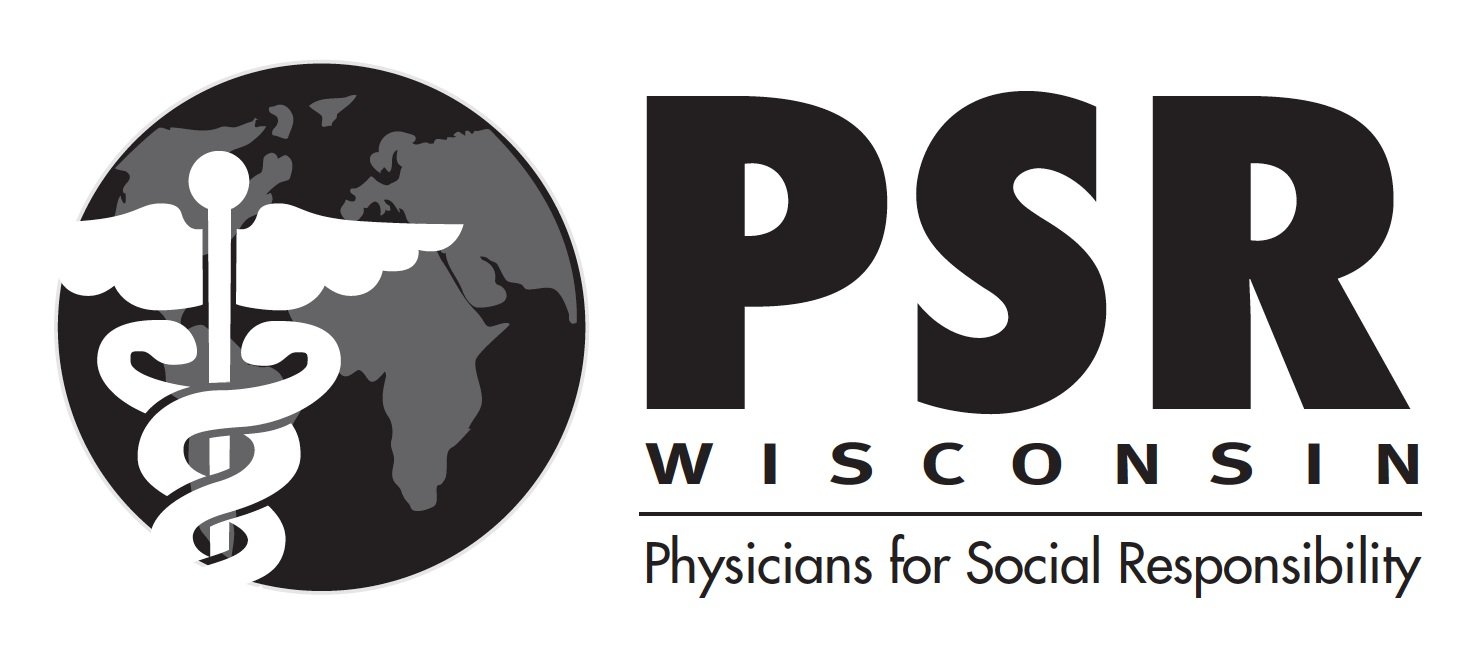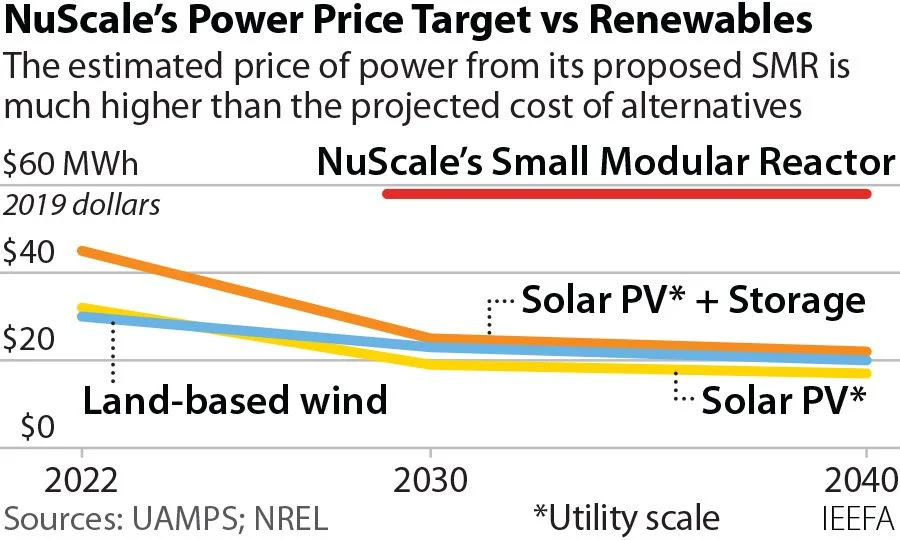SMALL MODULAR NUCLEAR REACTORS
Small modular nuclear reactors (SMRs) are too late, too expensive, too risky and too uncertain. We need to focus on energy storage, conservation and efficiency, and clean, safe renewable energy NOW.
Dairyland Power Cooperative based in western Wisconsin has partnered with NuScale Power to evaluate use of these small-scale nuclear reactors in Wisconsin.
SMRs are generally designed to produce 50 to 300 megawatts of electricity, compared to the typical 1,000 megawatts of traditional large-scale reactors (source).
TOO EXPENSIVE
Nuclear power is one of the most expensive forms of energy that also requires government subsidies. The Bipartisan Infrastructure Law signed into law in November 2021 includes a $6 billion program meant to maintain the existing U.S. fleet of nuclear power reactors (source).
The total cost of a proposed NuScale SMR project in Idaho Falls, Idaho has risen from around $3 billion in 2015, to $6.1 billion in 2020. Keep in mind that site construction has not even started (source).
Furthermore, SMRs would need to be produced in a large scale system in order to be economically viable, and SMRs are only in the pilot manufacturing phase currently. Mass production is problematic if all SMRs have the same design and a flaw becomes evident, then all will have the same flaw.
Renewable energy prices are falling while nuclear power costs for both SMR’s and traditional nuclear reactors are rising. The Lazard 2021 report shows the rising cost of nuclear power in comparison to other energy sources. According to the Institute for Energy Economics and Financial Analysis report, “NuScale has optimistically targeted the cost of power from the new [SMR] plant at $58 per megawatt-hour (MWh), although some estimates predict costs for the power from new SMRs could reach $200/MWh.” [see graph below for renewable energy comparison]. In the Idaho SMR project, consumers, communities and utilities are not guaranteed the $58/MWh price tag according to the “Carbon Free Power Project Power Sales Contract”. They will pay the actual cost, not the estimated cost per MWh.
Additionally, there is the long-term cost of safeguarding and managing nuclear waste from spent fuel. Although SMRs produce less waste than traditional reactors, SMRs still produce highly radioactive waste. No country in the world has a long-term solution for nuclear waste. For safe, secure storage of nuclear wastes for centuries in the future, who will be responsible for this cost is an open question.
Meanwhile, renewable energy has a proven history of declining costs over the long term and new recycling programs for turbines and solar panels are being developed and implemented.
TOO LATE
There is not even a functional, operating NuScale SMR in operation. The first NuScale SMR near Idaho Falls, Idaho is projected to start site preparation and excavation in 2025 with expected completion in 2029. We are already running late on addressing our climate crisis and we need immediate action. The process to scale up the production and use of SMRs in the US will take decades.
We need energy solutions right now and renewable energy is knocking at our door. Renewable energy can be constructed now. Megawatts of clean, safe energy with energy storage plans can be placed online by 2029 when the first SMR is “projected” to be completed.
Our elected officials can also institute effective policy measures to encourage residential rooftop solar, community solar, wind energy projects, storage solutions and energy conservation measures.
TOO UNCERTAIN
The NuScale small modular reactor project is a first-of-a-kind design, untested and unproven at commercial scale (source). We only have NuScale’s designs, claims and assumptions to base results on.
Again, proven renewable energy options are available right now. We need effective policy, public and utility support, and the finances to move rapidly forward on renewable energy and energy conservation.
TOO RISKY
An SMR is still a nuclear reactor. It necessitates the continued mining of uranium, safe and secure storage of nuclear waste and the potential of catastrophic environmental damage from accidental leaks of radioactivity.
Uranium still needs to be mined, transported across land or water, nuclear waste needs to be stored or transported across land or water increasing the likelihood of a “mobile Chernobyl” scenario, and reactor machinery and parts can deteriorate.
NuScale claims that their SMR will be able to respond to variable energy demands and increase production or decrease quickly (see contradictions to this claim here). This process is called load following. This process “...will likely cause components to degrade faster and may result in increased maintenance and lower module availability” (source). Therefore, responding to variable energy demands through the method of load following will cause increased wear on parts, need for more maintenance and an increased risk of accidents from machine deficiencies.
SMR Related News, Articles & Resources
Wisconsin Specific
A Wisconsin utility is considering using a new type of nuclear power plant to generate electricity of hundreds of thousands of homes by Rick Barret, Milwaukee Journal Sentinel
Dairyland Power Cooperative considers adding nuclear power to its energy portfolio by WPR
Back to the future: After 35 years, La Crosse utility takes fresh look at nuclear power by Chris Hubbuch at Wisconsin State Journal
Wisconsin co-op to explore adding small modular nuclear reactor to generation mix by Kevin Clark, Power Engineering
General
Why Small Modular Nuclear Reactors Won’t Help Counter the Climate Crisis By Arjun Makhijani, Ph.D. and M.V. Ramana, Ph.D. in EWG
NuScale’s Small Modular Reactor Risks of Rising Costs, Likely Delays, and Increasing Competition Cast Doubt on Long Running Development Effort by the Institute for Energy Economics and Financial Analysis
Former Nuclear Leaders: Say ‘No’ to New Reactors including Dr. Greg Jaczko former Chairman of the U.S. Nuclear Regulatory Commission, and founder of Maxean, an energy company
Small Modular Reactors: Fact Sheet from IEER
Small Modular Reactors No Solution for the Cost, Safety, and Waste Problems of Nuclear Power by Arjun Makhijani and Michele Boyd for IEER & PSR

